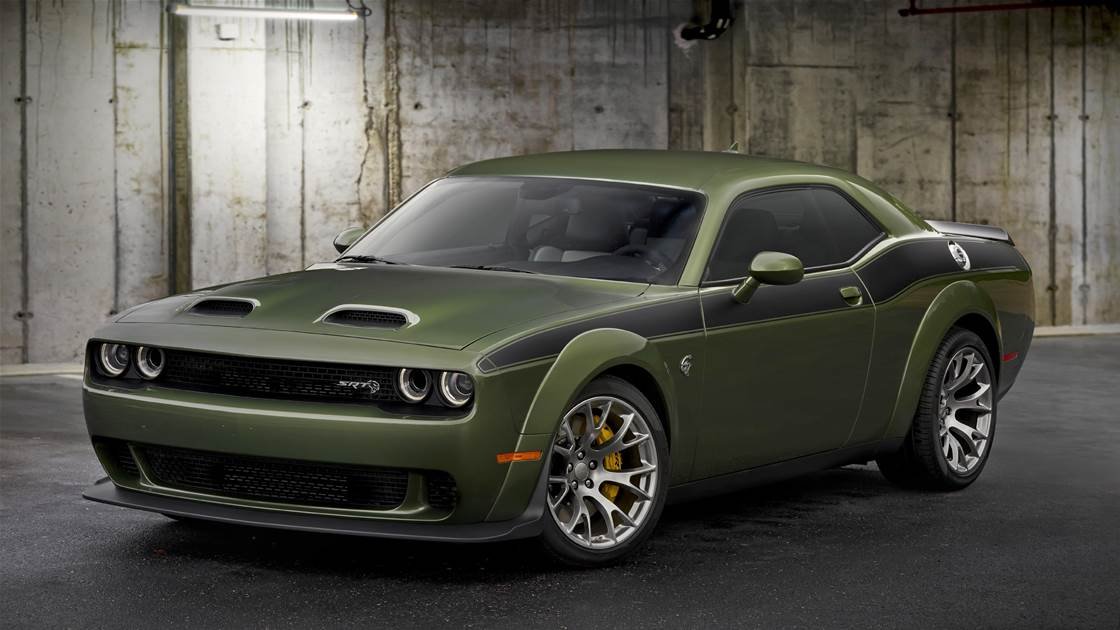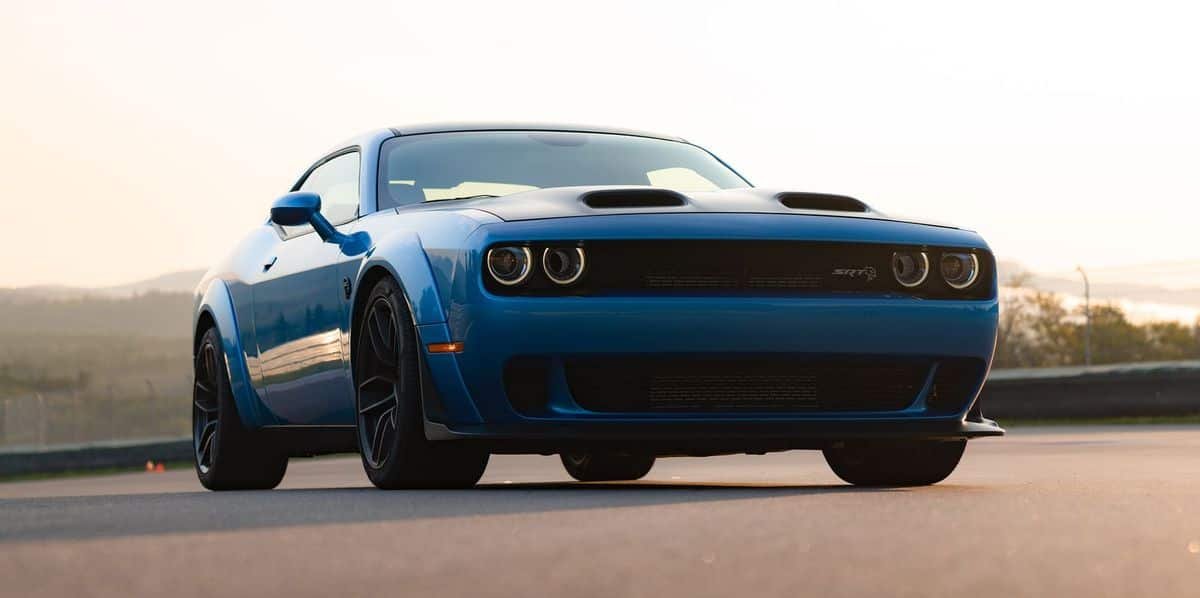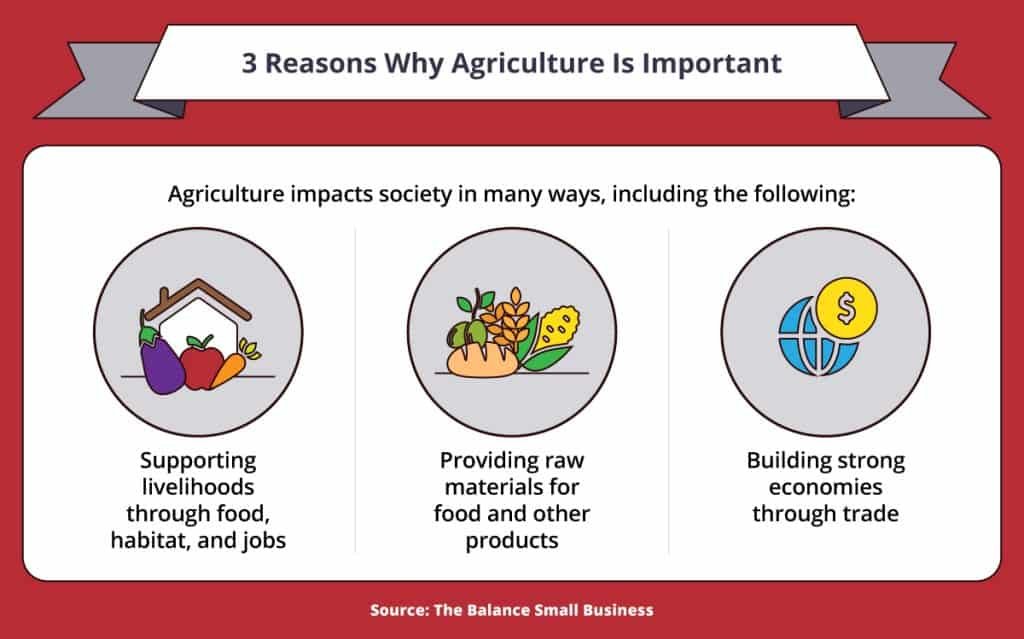V8 cars have long been a symbol of power, performance, and excitement on the road. These vehicles with their V8 engines have captured the hearts of car enthusiasts around the world, and their popularity continues to grow.
In this article, we will delve into the world of V8 cars, exploring what makes them stand out from other engine types, their rich history from muscle cars to supercars, the anatomy of a V8 engine and how it produces power, as well as the top V8 cars of all time. We will also discuss how technology is shaping the evolution of V8 cars and enhancing their performance and efficiency.
Furthermore, we will explore why these engines produce a distinct sound that resonates with car enthusiasts worldwide. Additionally, we will examine what makes driving a V8 car so thrilling and delve into the culture surrounding these iconic vehicles.
Key Takeaways
- V8 cars are known for their power and unique roar, making them stand out from other types of cars.
- The history of V8 cars dates back to the muscle car era and has evolved into modern supercars with advanced technology.
- Understanding the anatomy of a V8 engine is key to understanding the power behind the roar.
- Some of the top V8 cars of all time include the Ford Mustang, Chevrolet Camaro, and Dodge Challenger.
- While V8 cars are exciting to drive and have a dedicated fan base, it’s important to consider the environmental impact and properly maintain them for optimal performance.
Introduction to V8 Cars: What Makes Them Stand Out?
A V8 engine is an eight-cylinder internal combustion engine in which each cylinder has its own piston that moves in response to combustion within each cylinder chamber. This configuration provides several advantages over other engine types such as inline-four or six-cylinder engines. The primary advantage lies in its power output due to having more cylinders working together to generate torque and horsepower.
The increased number of cylinders allows for smoother operation since there are more power strokes per revolution compared to engines with fewer cylinders. This results in better acceleration and overall performance on both city streets and open highways.
Some popular examples of V8 cars include iconic models like Ford Mustang GT500 Shelby Cobra Super Snake Edition or Chevrolet Camaro ZL1 1LE which are known for their raw power under the hood combined with sleek designs that turn heads wherever they go.
The History of V8 Cars: From Muscle Cars to Supercars
The origins of V8 engines can be traced back to the early 20th century when automobile manufacturers began experimenting with different engine configurations. However, it was not until the 1950s and 1960s that V8 engines gained widespread popularity, particularly in the United States.
During this time, V8 muscle cars became a symbol of American automotive culture. These powerful machines were known for their aggressive styling and high-performance capabilities. Models like the Ford Mustang Boss 429 and Chevrolet Camaro Z28 became legends on the drag strips and open roads.
In recent years, V8 engines have also found their way into modern supercars. Manufacturers like Ferrari, Lamborghini, and McLaren have embraced the power of V8 engines to create exhilarating driving experiences. The Ferrari 458 Italia is a prime example of a modern supercar that combines cutting-edge technology with the raw power of a V8 engine.
Anatomy of a V8 Engine: Understanding the Power Behind the Roar
| Component | Description |
|---|---|
| Cylinders | The V8 engine has 8 cylinders arranged in a V-shape, with 4 cylinders on each side. |
| Pistons | Each cylinder has a piston that moves up and down, compressing air and fuel mixture to create power. |
| Valves | Each cylinder has two valves, an intake valve and an exhaust valve, that open and close to let air and fuel in and exhaust out. |
| Crankshaft | The crankshaft converts the up-and-down motion of the pistons into rotational motion that powers the car. |
| Camshaft | The camshaft controls the opening and closing of the valves, allowing air and fuel to enter and exhaust to exit at the right time. |
| Spark Plugs | The spark plugs ignite the air and fuel mixture in each cylinder, creating a controlled explosion that pushes the piston down and creates power. |
| Oil Pump | The oil pump circulates oil throughout the engine, lubricating moving parts and reducing friction and wear. |
| Thermostat | The thermostat regulates the engine’s temperature, opening and closing to allow coolant to flow through the engine and keep it from overheating. |
To truly appreciate what makes a V8 engine special, it’s important to understand its anatomy. A typical V8 engine consists of eight cylinders arranged in two banks at an angle to each other forming a “V” shape when viewed from above or below.
Each cylinder has its own piston connected to a crankshaft via connecting rods. When fuel is ignited within each cylinder chamber during combustion, it forces the piston down which turns the crankshaft and ultimately generates power.
The design of these engines allows for efficient airflow through intake and exhaust valves located on opposite sides of each cylinder bank. This enables better breathing capacity resulting in improved performance compared to other engine types.
It’s worth noting that not all V8 engines are created equal as different car models may feature variations in displacement (the total volume swept by all pistons) or forced induction methods such as turbocharging or supercharging which further enhance performance capabilities.
The Top V8 Cars of All Time: A Look at the Legends
Throughout history, there have been numerous V8 cars that have left an indelible mark on the automotive industry. These legendary vehicles have become icons in their own right, representing the pinnacle of performance and design.
One such example is the Ford Mustang, which has been a symbol of American muscle since its introduction in 1964. The Mustang GT500 Shelby Cobra Super Snake Edition is a modern interpretation of this classic, boasting a supercharged V8 engine that produces over 700 horsepower.
Another iconic V8 car is the Chevrolet Corvette. Known for its sleek design and impressive performance, the Corvette has been a staple in American sports car culture for decades. The latest iteration, the Chevrolet Corvette C8 Stingray, features a mid-engine layout and a powerful V8 engine that propels it from 0 to 60 mph in under three seconds.
On the international stage, Ferrari has made significant contributions to the world of V8 cars with models like the Ferrari 458 Italia. This mid-engine supercar combines Italian craftsmanship with cutting-edge technology and an exhilarating naturally aspirated V8 engine that revs to over 9,000 RPM.
The Evolution of V8 Cars: How Technology is Changing the Game
As technology continues to advance at an unprecedented pace, so too does the evolution of V8 cars. Manufacturers are constantly pushing boundaries to improve performance while also addressing concerns about fuel efficiency and emissions.
One area where advancements have been made is in engine management systems. Modern V8 cars utilize sophisticated computer algorithms to optimize fuel injection timing and ignition spark control for maximum power output while minimizing fuel consumption.
Additionally, advancements in materials science have allowed for lighter yet stronger components within engines resulting in improved power-to-weight ratios. This means that modern V8 engines can produce more power while being more efficient than their predecessors.
Furthermore, hybridization has also found its way into some high-performance vehicles featuring V8 engines. By combining electric motors with traditional combustion engines, manufacturers can harness the instant torque of electric power while still benefiting from the raw power and sound of a V8 engine.
The Sound of Power: Exploring the Unique Roar of V8 Cars
One aspect that sets V8 cars apart from other vehicles is their distinct engine sound. The deep, throaty roar produced by a V8 engine is often described as music to the ears of car enthusiasts.
The unique sound comes from the firing order and exhaust configuration specific to V8 engines. Each cylinder fires in a specific sequence, creating a rhythmic beat that resonates with our primal instincts. Combined with carefully designed exhaust systems, this results in an unmistakable symphony of power.
Certain V8 cars have become famous for their signature engine sounds. For example, the Ford Mustang Shelby GT350’s flat-plane crankshaft design produces a high-pitched wail reminiscent of European sports cars, while the Chevrolet Camaro ZL1’s supercharged V8 emits an aggressive growl that demands attention.
The cultural significance of these sounds cannot be understated. They evoke emotions and stir excitement among car enthusiasts who appreciate not only the performance but also the auditory experience that comes with driving or even just hearing a powerful V8 car in action.
The Thrill of Driving a V8 Car: What Makes it So Exciting?
Driving a V8 car is an experience like no other. The combination of raw power, responsive handling, and exhilarating acceleration creates an adrenaline rush that few other vehicles can match.
When you press down on the accelerator pedal in a well-tuned V8 car, you can feel every ounce of horsepower propelling you forward with authority. The surge in speed accompanied by the roar from under your hood creates an intoxicating sensation that puts a smile on your face every time.
Furthermore, driving enthusiasts appreciate how well-balanced many modern-day sports cars equipped with powerful V8 engines are. The weight distribution, suspension tuning, and aerodynamics all work together to provide a dynamic driving experience that is both engaging and confidence-inspiring.
Popular V8 cars for driving enthusiasts include the Dodge Challenger Hellcat, known for its straight-line speed and tire-shredding capabilities, as well as the BMW M5 with its combination of luxury and performance that can be enjoyed on both road trips and track days.
The Culture of V8 Cars: From Enthusiasts to Racing Fans
The world of V8 cars extends beyond individual ownership. It encompasses a vibrant community of car enthusiasts who share a passion for these powerful machines. Car shows, races, and other events bring together like-minded individuals to celebrate their love for V8 cars.
Car shows provide an opportunity for owners to showcase their prized possessions while also admiring the craftsmanship and creativity of others. These events often feature various categories such as classic muscle cars or modern supercars, allowing attendees to appreciate the diversity within the world of V8 vehicles.
Racing is another integral part of V8 car culture. Whether it’s professional motorsports like NASCAR or grassroots drag racing at local tracks, fans flock to witness these high-speed spectacles where drivers push themselves and their machines to the limit.
Famous personalities have also emerged from within the V8 car community. Carroll Shelby, renowned for his involvement in creating some of America’s most iconic sports cars like the Shelby Cobra and Mustang GT350, became a legend in his own right due to his contributions to automotive history.
The Future of V8 Cars: What’s Next for this Iconic Engine?
As we look ahead into the future, there are questions about what lies ahead for this iconic engine type in an era focused on sustainability and electric mobility. While it is true that electric vehicles are gaining popularity due to their environmental benefits, there will always be a place for powerful combustion engines like those found in V8 cars.
Manufacturers are investing in research and development to make V8 engines more efficient and environmentally friendly. Technologies such as cylinder deactivation, where some cylinders are temporarily shut down during low-load conditions, help reduce fuel consumption without sacrificing performance.
Furthermore, advancements in hybrid technology allow for the integration of electric motors alongside traditional combustion engines. This not only improves fuel efficiency but also provides an opportunity for instant torque delivery and enhanced performance when needed.
Upcoming V8 cars like the Ford Mustang Mach-E GT Performance Edition, an all-electric SUV with a targeted 0-60 mph time of under four seconds, demonstrate that manufacturers are finding innovative ways to combine sustainability with the power and excitement of a V8 engine.
The Environmental Impact of V8 Cars: Balancing Performance and Sustainability
It is important to acknowledge that while V8 cars offer thrilling performance, they also have an environmental impact due to their higher fuel consumption and emissions compared to smaller engine types or electric vehicles. However, efforts are being made within the automotive industry to strike a balance between performance and sustainability.
One approach is improving fuel efficiency through technological advancements mentioned earlier such as cylinder deactivation or turbocharging which allows smaller displacement engines to produce similar power outputs while consuming less fuel.
Additionally, manufacturers are investing heavily in research and development of alternative fuels such as biofuels or synthetic fuels that can be used in existing combustion engines without significant modifications. These fuels have the potential to reduce carbon emissions associated with driving high-performance vehicles like those equipped with V8 engines.
Furthermore, some manufacturers have introduced eco-friendly versions of their iconic models by incorporating hybrid technology into their lineup. For example, Porsche offers hybrid variants of its sports cars like the Panamera Turbo S E-Hybrid which combines a powerful twin-turbocharged V8 engine with an electric motor for improved efficiency without compromising on performance.
Tips for Owning and Maintaining a V8 Car: Keeping Your Ride in Top Shape
Owning a V8 car comes with its own set of responsibilities to ensure that your ride remains in top shape. Regular maintenance is crucial to keep the engine running smoothly and prevent any potential issues from arising.
First and foremost, it is important to follow the manufacturer’s recommended maintenance schedule. This includes regular oil changes, air filter replacements, and spark plug inspections. These routine tasks help maintain optimal engine performance and longevity.
Additionally, paying attention to warning signs such as unusual noises or vibrations can help identify potential problems early on. Addressing these issues promptly can save you from costly repairs down the line.
It is also essential to use high-quality fuel and lubricants recommended by the manufacturer. This ensures that your V8 engine receives the necessary protection and performs at its best.
Lastly, keeping your V8 car clean both inside and out not only enhances its appearance but also helps preserve its value over time. Regular washing, waxing, and interior cleaning will keep your pride and joy looking fresh for years to come.
In conclusion, V8 cars have captivated automotive enthusiasts for decades with their power, performance, unique sound signature, and thrilling driving experiences. From their origins in muscle cars of the 1960s to modern supercars pushing technological boundaries today, V8 engines continue to evolve while maintaining their iconic status.
While there are challenges ahead regarding sustainability in an increasingly eco-conscious world, manufacturers are investing in research and development to make V8 engines more efficient while still delivering exhilarating performance.
Whether you’re a fan of classic muscle cars like the Ford Mustang or appreciate the cutting-edge technology found in modern supercars like Ferrari’s 458 Italia or McLaren’s 720S Spider – there is no denying that V8 cars hold a special place in automotive history.
So next time you hear that unmistakable roar coming from under the hood of a powerful V8 car, take a moment to appreciate the engineering marvel that lies within and the enduring legacy of these iconic machines.
FAQs
What is a V8 engine?
A V8 engine is a type of internal combustion engine with eight cylinders arranged in a V shape. It is commonly used in high-performance vehicles due to its power and torque.
What makes V8 cars so powerful?
V8 cars are powerful due to the design of the V8 engine. The V8 engine has eight cylinders, which allows for more fuel to be burned and more power to be generated. Additionally, V8 engines often have larger displacement, which also contributes to their power.
What are some popular V8 cars?
Some popular V8 cars include the Ford Mustang, Chevrolet Camaro, Dodge Challenger, and Audi R8. These cars are known for their high performance and powerful engines.
What is the fuel efficiency of V8 cars?
V8 cars are not known for their fuel efficiency. Due to their powerful engines, they often consume more fuel than smaller engines. However, advancements in technology have led to some V8 cars being more fuel-efficient than in the past.
What is the top speed of V8 cars?
The top speed of V8 cars varies depending on the specific car and engine. However, many V8 cars are capable of reaching speeds of over 150 miles per hour.
What are some advantages of V8 cars?
Some advantages of V8 cars include their power and performance. V8 engines are known for their ability to generate high levels of power and torque, which makes them ideal for high-performance vehicles. Additionally, V8 cars often have a distinctive sound that many car enthusiasts find appealing.
What are some disadvantages of V8 cars?
Some disadvantages of V8 cars include their fuel consumption and emissions. V8 engines often consume more fuel than smaller engines, which can be expensive and harmful to the environment. Additionally, V8 cars may be more expensive to maintain and repair due to their complex engines.







